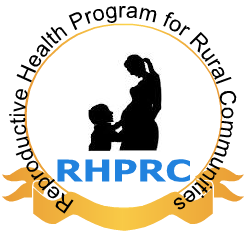A REPRODUCTIVE HEALTH PROGRAMME FOR
RURAL COMMUNITIES (RHPRC)
This programme
started in February 2012 based on information from a research done in some
villages of Meru and Nakuru which shed light about the level of health
information available to adolescents, youths and young women living in rural
Kenya. It was established that these areas are always last in getting any form
of public service and infrastructure and their general health information is
very low.
We
divided the target group into two phases.
·
Phase 1, 2012 to 2014-Adolescents and
youths. Awareness will be focused on reproductive growth and development, Sexually
Transmitted Infections, sexuality, effects of drugs on reproductive health and
contraceptives.
·
Phase 2, 2015-2017- Young women in their
reproductive age- Awareness will be focused on family planning, importance of
antenatal checkups and nutrition while pregnant, other related health problems
and complications during pregnancy and baby (Maternal health care).
We have
been holding awareness sessions in parts of Meru and Nakuru counties because
the volunteers come from Meru and Egerton University. So far we have visited 4 high schools in Meru
and 4 in Nakuru and 3 youth groups. The
past sessions held have always been successful in terms of knowledge transfer
based on the reports from the evaluation forms we receive after holding a
session. The volunteers have also learnt
a lot through this and each time their presentation skills get better.
Social
media is another avenue we use to create reproductive health awareness. This
has also been resourceful in enlightening us on the youth and adolescent’s
information need. Interested volunteers know about the programme through social
media.
The
demand and need for reproductive health information is still very high
especially for high school students, therefore we have a lot planned come
2013. We will have another unit of
volunteers from Kenyatta University to create awareness in Thika County. They will use an organization model similar
to what is used by Egerton University volunteers.
Our goal
is to pass out reproductive health information to as many people as possible.
We specifically target communities living in the rural areas because they are
the most marginalized and disadvantaged by illiteracy, poverty and lack of
infrastructure. Many high school students have not been exposed to right health
information and whatever information they have is outdated or pretty wrong
.
.
A great
achievement for the initiative this year is t
he fact that at its first year of operation, institutions trusted us to pass this very sensitive set of information. Most of all we are very happy to be one of the recipients of Google Ambassador Action Fund courtesy of Girls20summit and Google. These funds will enable us purchase basic training materials and meet transport cost incurred by volunteers in their cause of work
.
he fact that at its first year of operation, institutions trusted us to pass this very sensitive set of information. Most of all we are very happy to be one of the recipients of Google Ambassador Action Fund courtesy of Girls20summit and Google. These funds will enable us purchase basic training materials and meet transport cost incurred by volunteers in their cause of work
.
We are
looking forward to partnering and working with other organizations because we
need more financial support. Two main goals we would love achieve by end of
2013 is to develop a favorable and simplified curriculum on reproductive health
for adolescents and youth in Kenya and set up health clubs in high schools
which will be a vessel of disseminating
reproductive health information to the students; here we will train a
few students in respective high schools who will be running these clubs
Links

